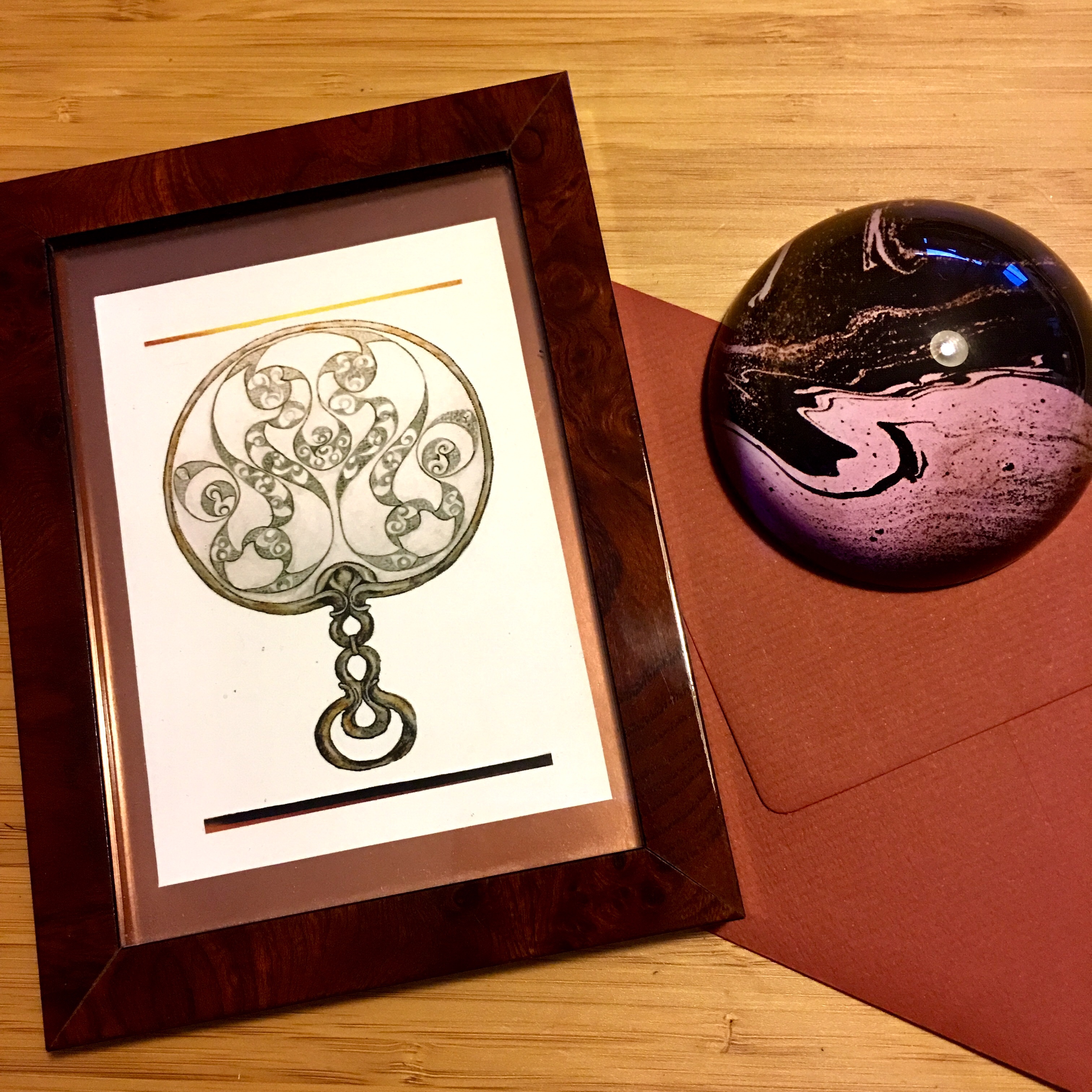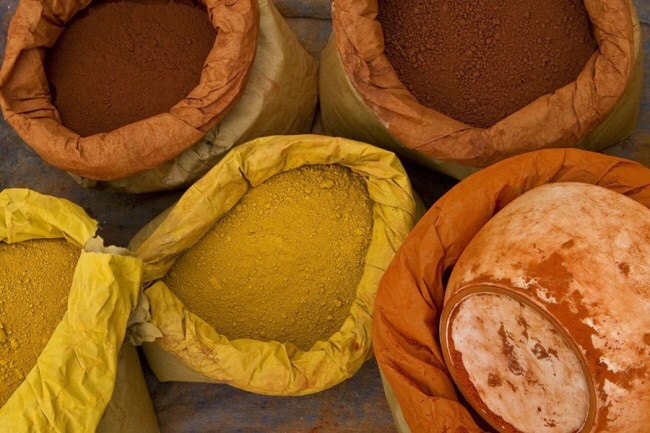





Would you like to order a professionally printed Mandarin Ducks (Aix galericulata) art card or postcard that can be framed? You are at the right place. Over the years I have drawn and painted many Mandarin duck couples as commissions but also free hand.
Two cards are double folded, others are postcards. All come with envelopes. Plus, as long as I have them in stock, I will include an Asian, vintage mandarin duck postal stamp. For large orders I need extra time because large amounts will be printed on demand. Please, contact me for orders of more than 5.
What do I have in stock?
I have this double folded art card with the drake (male duck) on the left side:


Two (2) Mandarin Duck Art Cards. (Standing)
These marvellous mandarin ducks sit closely together to confirm their bond. The drake (male) is dressed up in his brightest colours to show off to his loving female (duck); she is dressed down because soon she will have a nest and ducklings and should therefore blend in as much as possible for safety reasons. This couple stays together for life. It is therefore that they symbolize love, loyalty, and long lasting friendship. Apart from that, they are small ducks and very cute. This is a double folded art card. Professionally printed with a larger image inside that can be framed. Frame it and put it on display; this is suppose to confirm the bonding between partners. Artwork by Paula Kuitenbrouwer
€17.00
And this double folded art card, with the drake on the right side:


Two (2) Mandarin Duck Art Cards (Resting)
These marvellous mandarin ducks sit closely together to confirm their bond. The drake (male) is dressed up in his brightest colours to show off to his loving female (duck); she is dressed down because soon she will have a nest and ducklings and should therefore blend in as much as possible for safety reasons. This couple stays together for life. It is therefore that they symbolize love, loyalty, and long lasting friendship. Apart from that, they are small ducks and very cute. This is a double folded art card. Professionally printed with a larger image inside that can be framed. Frame it and put it on display; this is suppose to confirm the bonding between partners. Artwork by Paula Kuitenbrouwer
€17.00
Plus, I have two postcards. A monochromatic (a romantic 19s century graphite drawing) post card with mandarin ducks resting near a forest stream:


4 Mandarin Duck Postcards (Monochromatic)
These marvellous mandarin ducks sit closely together near a forest brook. They do a last scan for possible dangers but are already in resting position. Overflying birds and a beautiful sunset add to their decision to relax. Notice their reflection in the pure water. This couple stays together for life. It is therefore that they symbolize love, loyalty, and long lasting friendship. Apart from that, they are small ducks. Take away their colours and they still are mesmerizing cute. This is a postcard. Professionally printed. Artwork by Paula Kuitenbrouwer
€18.00
Last, this vintage coloured (watercolour) one with mandarin ducks resting under large, lush lotus leaves. Low in stock!


Two full colour ‘Vintage’ Mandarin Ducks Postcards
Two beautiful Mandarin Ducks postcards with golden hearts in all corners. The original painting was done with subtle sparkling graphite water paint which is even visible on the photo as that deep ‘vintage’ atmosphere this painting gives. As long as the stock lasts, this postcards will be accompanied with a small vintage mandarin duck postal stamp. Many have decided to not send this card, to keep it ,and frame it. It is therefore that they come as a set: one to send; one to keep.
€17.00
FRAMED MANDARIN DUCKS
In case a postcard is not enough, in case a more substantial gift is needed, I have a few mounted mandarin ducks available too. These are coloured pencil/water-colour original artworks. They are mounted with professional Kadinsky mounts (UK). They will arrive at your home in a strong package. They can be framed but there are customers who do not frame them and put them on their shelves on a small painting’s easel (which I have available as well). For more information on these lovely mandarin ducks, click here. This link provides you with the option to add a small painter’s easel for displaying your mandarin ducks without a frame. Take good care: there are mandarin ducks looking left or right. You probably prefer a mandarin couple looking to the directing of the welcoming door of the room where you will put them on display.





Would you like to order my original artwork via Etsy, follow this link.
There are many MANDARIN DUCKS at my ETSY. Sometimes I think my Etsy shop is a duck pond with the most colourful and cute ducks imaginable (including wood ducks, teals and swans)
Paula Kuitenbrouwer
Paula Kuitenbrouwer, Drs. M.A. Paula holds an MA degree in Philosophy and works as an artist in Utrecht. She is the owner of mindfuldrawing.com, a website with academic essays, short articles, and artworks. Her pen and pencils are always fighting for her attention nevertheless they are best friends; Paula likes her art to be brainy and her essays to be artistic. Contact Paula freely for commissions or articles.
- The Artist’s Life
- Swedish Death Cleaning or Döstädning & Dementia
- Swedish Death Cleaning Part 3.
- Swedish Death Cleaning Part 2.
- Self Portrait






















 In real, there is no flower vase, just pavement in front of this gate. I received some feedback, stating: ‘There is a great difference between a photo of this gate and your drawing. A photo shows beautiful stonework but you have drawn something dreamy and poetic. The gate has become a portal to another world. You can walk through it and find yourself in a Medieval landscape with knights and dryads‘. I think the feedback itself is rather poetical, don’t you think? Such sensitive feedback stimulates me to make even more progress.
In real, there is no flower vase, just pavement in front of this gate. I received some feedback, stating: ‘There is a great difference between a photo of this gate and your drawing. A photo shows beautiful stonework but you have drawn something dreamy and poetic. The gate has become a portal to another world. You can walk through it and find yourself in a Medieval landscape with knights and dryads‘. I think the feedback itself is rather poetical, don’t you think? Such sensitive feedback stimulates me to make even more progress.
 Commissions are welcome for drawing a favourite place be it a gate home, residence, manor house, hotel, garden, holiday-home, estate, or apartment. Contact me for discussing your preferences.
Commissions are welcome for drawing a favourite place be it a gate home, residence, manor house, hotel, garden, holiday-home, estate, or apartment. Contact me for discussing your preferences.


